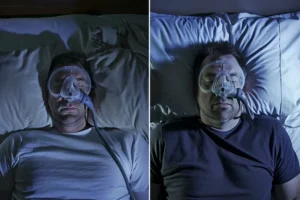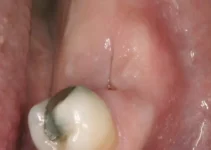Exploring the impact of continuous positive airway pressure (CPAP) therapy is transformative for many suffering from sleep apnea. This article delves into personal health transformations, highlighting how symptoms like snoring, daytime fatigue, and irritability can dramatically improve. By examining both qualitative and quantitative changes, we provide insights into the typical outcomes of CPAP usage, drawing from scientific studies and patient testimonies to paint a comprehensive picture of potential health improvements.
Introduction to CPAP Therapy
Continuous Positive Airway Pressure (CPAP) therapy is a standard treatment for individuals suffering from sleep apnea, particularly Obstructive Sleep Apnea (OSA). CPAP therapy involves the use of a machine to aid in maintaining continuous pressure in the airways, ensuring they remain open during sleep. This therapy not only improves sleep quality but also helps in reducing the risk of associated conditions such as heart disease and stroke. Proper usage of CPAP can dramatically improve the quality of life for those with sleep apnea. However, understanding the mechanics and requirements for this therapy is crucial. This article aims to provide an in-depth look at CPAP, how it functions, and who might benefit from its application.
What is CPAP?
CPAP stands for Continuous Positive Airway Pressure. It is a device commonly used to treat sleep apnea disorders by delivering a steady stream of pressurized air through a mask to keep the airways open during sleep. The machine typically consists of a motor that generates the airflow, a hose to carry the air, and a mask that delivers the air to the nose or mouth.
The key to CPAP therapy is the continuous pressure. Unlike other types of treatments, such as oral appliances or surgical options, CPAP does not alter the anatomy of the airway but works by utilizing pressure to prevent it from collapsing. This makes it a non-invasive, yet highly effective, treatment option.
How Does CPAP Work?
The main function of CPAP is to prevent airway collapse during sleep, ensuring that users can breathe without interruption. This is achieved by the continuous delivery of pressurized air, which holds the airways open. Once the airway is kept open, normal breathing is restored, reducing snoring and preventing apnea events.
- The patient wears a mask that covers the nose and/or mouth during sleep.
- The CPAP machine generates a flow of pressurized air.
- This pressurized air is delivered through a hose and mask to the patient’s airways.
- The constant pressure ensures that the throat muscles do not collapse, allowing for unobstructed breathing.
Studies have shown that CPAP therapy can significantly reduce the number of apnea events and improve the overall sleep quality of affected individuals. Furthermore, consistent use of CPAP has been linked to reductions in daytime sleepiness and improvements in cognitive function.
Who Needs CPAP Therapy?
CPAP therapy is primarily prescribed for individuals diagnosed with sleep apnea, especially Obstructive Sleep Apnea (OSA). OSA occurs when the throat muscles intermittently relax and block the airway during sleep. People with moderate to severe OSA are the most common candidates for CPAP therapy.
However, CPAP is not limited to OSA alone. It can also be beneficial for other types of sleep-disordered breathing, including Central Sleep Apnea (CSA) and Complex Sleep Apnea Syndrome (a combination of OSA and CSA).
Determining the need for CPAP therapy typically involves a sleep study or polysomnography. This diagnostic test monitors various body functions during sleep, such as brain activity, eye movement, heart rate, and breathing patterns, to determine the presence and severity of sleep apnea.
For those diagnosed with sleep apnea, CPAP therapy offers a non-invasive, highly effective treatment option. By providing continuous pressure, it helps maintain open airways, ensuring a stable and restful sleep. For further insights on sleep disorder treatments and advancements in CPAP technology, don’t hesitate to explore our other articles.
Health Benefits after Using CPAP
Continuous Positive Airway Pressure (CPAP) therapy is a common treatment for obstructive sleep apnea (OSA). The use of a CPAP machine helps keep the airways open during sleep, ensuring a continuous flow of air. This simple yet effective treatment can bring about numerous health benefits that significantly enhance the quality of life for those suffering from sleep apnea. In this article, we will explore the key health benefits associated with the use of CPAP therapy.
By maintaining an open airway, CPAP therapy can lead to better quality sleep, reduced daytime fatigue, and a lowered risk of various cardiovascular issues. The following sections delve into these specific benefits in more detail.
Improved Sleep Quality
One of the most immediate and noticeable benefits of CPAP therapy is the improvement in sleep quality. OSA sufferers often experience disrupted sleep due to frequent breathing interruptions. CPAP machines help prevent these interruptions, allowing for more restorative and uninterrupted sleep.
Studies have shown that patients using CPAP therapy experience an increase in the duration of deep sleep stages, which are crucial for physical and mental restoration. With better sleep quality, individuals often report feeling more refreshed and alert upon waking.
Moreover, improved sleep quality has a ripple effect on overall well-being. For instance, better sleep can lead to an enhancement in mood, cognitive function, and even a reduction in anxiety and depression symptoms.
Ultimately, the consistent use of CPAP therapy can bring about lasting improvements in sleep patterns, which are essential for a healthier life.
Reduction in Daytime Fatigue
Daytime fatigue is a common and debilitating symptom of OSA, often leading to reduced productivity and quality of life. Using CPAP therapy can significantly reduce daytime fatigue, allowing individuals to feel more energetic and focused throughout the day.
Improved sleep quality directly contributes to reduced fatigue. When the body receives the restorative sleep it needs, fatigue levels naturally decrease. This means that individuals using CPAP are less likely to experience the drowsiness and sluggishness that commonly plague those with untreated sleep apnea.
In addition to personal benefits, reduced daytime fatigue can have broader societal implications. For example, individuals who are well-rested are less likely to be involved in accidents, particularly motor vehicle accidents, which are often linked to drowsy driving.
Overall, the reduction in daytime fatigue brought about by CPAP therapy can enhance both personal and public safety and well-being.
Lowered Risk of Heart Disease
Another critical benefit of CPAP therapy is its potential to lower the risk of heart disease. OSA is associated with various cardiovascular issues, including hypertension (high blood pressure), heart attack, and stroke. CPAP therapy helps mitigate these risks by ensuring continuous airflow and reducing strain on the cardiovascular system.
Research indicates that the consistent use of CPAP therapy can lead to a reduction in blood pressure levels. Elevated blood pressure is a significant risk factor for heart disease, and controlling it through effective treatment like CPAP can substantially lower cardiovascular risks.
Additionally, by preventing oxygen deprivation during sleep, CPAP therapy helps maintain healthier blood vessels and reduces the likelihood of plaque buildup. This further contributes to a lower risk of heart-related events.
In summary, CPAP therapy offers a holistic approach to improving heart health by addressing one of its underlying risk factors—obstructive sleep apnea. Patients who adhere to CPAP treatment can significantly enhance their cardiovascular health and overall longevity.
The benefits of CPAP therapy extend far beyond just treating sleep apnea. Improved sleep quality, reduced daytime fatigue, and a lowered risk of heart disease are just a few of the myriad advantages that can profoundly impact one’s health and quality of life. For more in-depth insights into various medical treatments and their benefits, be sure to check out our other articles.
Before CPAP: Common Sleep Issues
Understanding the root causes of sleep problems is crucial for determining the most effective treatment. Before Continuous Positive Airway Pressure (CPAP) therapy becomes an option, many individuals experience a variety of sleep issues that significantly impact their quality of life. This section will explore some of the most common sleep-related problems people face. Identifying these issues early can lead to more effective treatments and better overall health. Poor sleep is linked to numerous health risks, including cardiovascular diseases, diabetes, and impaired cognitive function. Recognizing the symptoms and underlying causes can make a substantial difference in managing these risks.
Snoring and Sleep Apnea
Snoring is often dismissed as a minor nuisance, but it can be a sign of a more serious condition known as sleep apnea. Sleep apnea is characterized by repeated interruptions in breathing during sleep, which can lead to severe health issues. These interruptions cause reduced oxygen levels in the blood, leading to frequent awakenings and disrupted sleep.
There are two main types of sleep apnea: Obstructive Sleep Apnea (OSA) and Central Sleep Apnea (CSA). OSA is more common and occurs when the throat muscles intermittently relax and block the airway. CSA, on the other hand, happens because the brain fails to send proper signals to the muscles that control breathing. Both types require prompt medical attention for diagnosis and treatment.
Insomnia and Restless Sleep
Insomnia is another prevalent sleep disorder that affects millions of people worldwide. It involves difficulty falling asleep, staying asleep, or both. Chronic insomnia can lead to long-term health problems, including anxiety, depression, and cardiovascular issues. The causes of insomnia are varied, ranging from stress and anxiety to poor sleep hygiene and underlying medical conditions.
Restless Sleep often accompanies insomnia, leading to frequent awakenings and a feeling of unrefreshing sleep. This can be caused by conditions such as Restless Legs Syndrome (RLS) or periodic limb movement disorder. Both conditions involve involuntary movements that disturb sleep and reduce its quality.
Daytime Sleepiness and Fatigue
One of the most troubling consequences of poor sleep is daytime sleepiness and fatigue. This can severely impact one’s ability to perform daily tasks, affecting productivity and increasing the risk of accidents.
Chronic fatigue can be a result of various sleep disorders, including sleep apnea, insomnia, and circadian rhythm disorders. It’s essential to identify the underlying cause to effectively address daytime sleepiness. Proper diagnosis and treatment can significantly improve one’s quality of life and overall well-being.
Addressing these common sleep issues before they escalate can pave the way for healthier sleep patterns and better health outcomes. If you found this article helpful, consider reading our other articles on sleep health and treatment options.
CPAP Machine Usage Tips
Continuous Positive Airway Pressure (CPAP) machines are a lifeline for many individuals suffering from sleep apnea. Proper usage of a CPAP machine can significantly improve both the quality of sleep and overall health. Nevertheless, to maximize the effectiveness of the device, it’s crucial to follow certain tips and guidelines. Below, we’ll delve into several key points you should keep in mind when using your CPAP machine.
Consistency is key when it comes to CPAP therapy. Regular usage helps your body adjust to the machine, leading to better long-term results. Skipping nights can hinder your progress and may make it harder to get accustomed to the device. Additionally, maintaining a clean machine and mask is essential for preventing infections and ensuring optimal functionality. Cleaning the components at least once a week is generally recommended.
Proper adjustment and fitting of your mask and machine settings can make a world of difference in your comfort and the effectiveness of the treatment. Ensuring that your mask fits well without causing skin irritation and adjusting the air pressure according to your doctor’s recommendations can significantly enhance your treatment experience.
Choosing the Right Mask
Selecting the right CPAP mask is one of the most crucial steps in ensuring effective therapy. Masks come in various styles and sizes, each designed to cater to different needs and preferences. The three most common types are nasal masks, full-face masks, and nasal pillows. Each has its own set of advantages and disadvantages, making it essential to choose one that fits comfortably and meets your specific needs.
Nasal masks cover the nose and are generally more comfortable for users who move around a lot in their sleep. They offer a good balance between comfort and efficiency. Full-face masks, on the other hand, cover both the nose and mouth, making them ideal for individuals who breathe through their mouths during sleep. Lastly, nasal pillows are small, compact devices that fit directly into the nostrils, offering minimal contact with the face and maximum freedom of movement.
It’s also vital to consider mask material and cushion type. Some masks use gel cushions for added comfort, while others may use silicone or foam. Trying different materials can help you find the most comfortable option. A good fit will help avoid common issues such as air leaks and skin irritation, both of which can reduce the effectiveness of your therapy.
When choosing a mask, don’t hesitate to consult with your healthcare provider. They can offer personalized recommendations based on your unique requirements and provide advice on how to properly fit and adjust your mask. Often, they will allow you to try different masks to find the one that best suits your needs.
For further insights and tips on CPAP machine usage, feel free to explore our other articles, where we delve deeper into specific topics to help you get the most out of your therapy. Happy reading!
FAQs on CPAP Machine Impact
Many individuals have questions about how their life will change after starting to use a CPAP machine. Below, we address one of the most common inquiries.
What improvements can I expect in my health after using a CPAP machine?
After beginning CPAP therapy, users often experience significant improvements in their sleep quality, which can lead to better overall health. Common benefits include reduced daytime fatigue, improved cognitive function, and decreased risk of complications related to sleep apnea, such as hypertension and heart disease. Additionally, many users observe enhancements in mood stability and a reduced frequency of headaches.

My name is Salman Kapa, a 73-year-old expert in bone regeneration and dental implantology. With decades of experience in the field, I am dedicated to advancing our understanding of oral health and hygiene. Through my research and writing, I aim to contribute to the development of innovative solutions in dental care.




